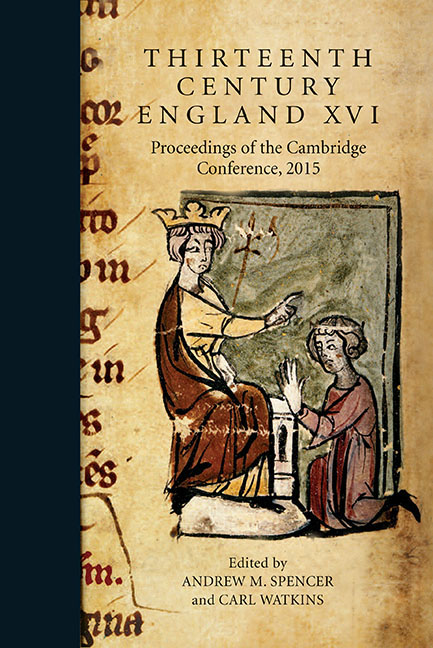Book contents
- Frontmatter
- CONTENTS
- List of Illustrations
- List of Contributors
- List of Abbreviations
- Introduction
- The Uncertainties of Reformers: Collective Anxieties and Strategic Discourses
- Moral Dilemmas in English Confessors’ Manuals
- Damnatio Eternae Mortis or Medicinalis Non Mortalis: The Ambiguities of Excommunication in Thirteenth-Century England
- The Contribution of Thomas Docking to the History of Political Thought
- Dealing with Inadequate Kingship: Uncertain Responses from Magna Carta to Deposition, 1199–1327
- The Rebel's Four Dilemmas in the Long Thirteenth Century
- The Daughters of William the Lion and Queen Ermengarde
- Simon de Montfort and the Ambiguity of Ethnicity in Thirteenth-Century Politics
- The Hue and Cry in Thirteenth-Century England
- Recalling Anglo-Scottish Relations in 1291: Historical Knowledge, Monastic Memory and the Edwardian Inquests
The Hue and Cry in Thirteenth-Century England
Published online by Cambridge University Press: 23 August 2019
- Frontmatter
- CONTENTS
- List of Illustrations
- List of Contributors
- List of Abbreviations
- Introduction
- The Uncertainties of Reformers: Collective Anxieties and Strategic Discourses
- Moral Dilemmas in English Confessors’ Manuals
- Damnatio Eternae Mortis or Medicinalis Non Mortalis: The Ambiguities of Excommunication in Thirteenth-Century England
- The Contribution of Thomas Docking to the History of Political Thought
- Dealing with Inadequate Kingship: Uncertain Responses from Magna Carta to Deposition, 1199–1327
- The Rebel's Four Dilemmas in the Long Thirteenth Century
- The Daughters of William the Lion and Queen Ermengarde
- Simon de Montfort and the Ambiguity of Ethnicity in Thirteenth-Century Politics
- The Hue and Cry in Thirteenth-Century England
- Recalling Anglo-Scottish Relations in 1291: Historical Knowledge, Monastic Memory and the Edwardian Inquests
Summary
On 15 September 1275, Godfrey le Steadman killed Robert Field with an axe and then fled. Maud, the daughter of Alice of Herne, found Robert's dead body, and so ‘raised the hue and cry (levavit hutesium)’. Shortly thereafter, ‘Hugh of Stapleford [the sheriff] was ordered to arrest Godfrey, William and John’, three men suspected of the killing. Later, at the county court, when Robert's sister, Cecily, appealed Godfrey for Robert's death (as well as the two other men for their part in the killing), Cecily was also said to have ‘immediately raised the hue and cry (recenter levavit hutesium)’. This entry from a Bedfordshire coroner's roll raises interesting questions: why did Cecily raise a hue and cry after Maud had already raised one? Furthermore, why were both hue and cries recorded? The answers to these questions can be found by asking an even more significant question: what was expected of people when they witnessed crime or saw its consequences? The short – though also in most cases extended – answer is: raise the hue and cry. But what exactly was the hue and cry, and how was it raised?
Historians usually treat the hue and cry as serving mostly one purpose – the pursuit of criminals – since they deal with it only inasmuch as it pertains to their wider subject. Some, however, have demonstrated that the hue and cry could be raised for more than just the purpose of initiating a pursuit; it could be raised when people happened upon dead bodies, or wished to bring an appeal. In particular, John Hudson, R.F. Hunnisett and Henry Summerson have said that the hue and cry contained elements of both notification and pursuit. Yet the variety of reasons that necessitated different responses from those who raised and responded to hue and cries has never been fully investigated. This article examines the role of the hue and cry in thirteenth-century England's system of criminal justice. It explores what the hue and cry was, as well as how it was raised, by unpacking the complex set of legal obligations found in a selection of entries from thirteenth-century plea rolls and coroners’ rolls.
- Type
- Chapter
- Information
- Thirteenth Century England XVIProceedings of the Cambridge Conference, 2015, pp. 153 - 172Publisher: Boydell & BrewerPrint publication year: 2017



